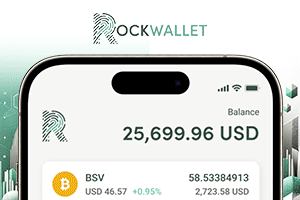SEC hints at future regulatory framework under new guidance

The United States Securities and Exchange Commission (SEC) has provided some clarity on how the rules governing
securities registration and disclosure apply to digital asset offerings in a guidance statement released on April 11.
Authored by the SEC’s Division of Corporation Finance, the statement intends to present the Division’s views during the ‘pendency’ of a more comprehensive and clear regulatory framework for digital assets announced in January. Presented as a selection of practical examples from recent digital asset security registrations, the guidance has no legal effect, and it makes clear that its contents have neither been approved nor disapproved by the SEC.
Regardless, the examples cited will be useful to issuers preparing to register a digital asset offering and may offer a clue as to the focus of any future framework.
For example, long-standing rules require that issuers seeking registration provide a narrative description of the material aspects of their business. The guidance provides examples of what qualifies as a ‘material aspect’ in a digital asset context based on disclosures made to the SEC in recent registrations:
- Matters that specifically relate to the material aspects of the issuer’s current or proposed business rather than non-specific digital asset networks and technologies
- They address the current stage of the businesses development as distinct from plans for the future
- Is consistent with the issuer’s public statements and promotional materials
In the same vein, the statement discusses how the requirement to disclose factors that could make an investment in any securities offering speculative or risky might apply to digital assets. It says that “the content and scope of an issuer’s disclosure will depend on the nature of the security and the issuer’s business, and may include factors that address the development and implementation of the issuer’s business and the particular characteristics of the security, such as its features, price volatility, limited rights of holders, valuation and liquidity risks, technological risks, cybersecurity risks, business, operational and network risks, and legal and regulatory risks.”
Similarly, there are examples of what material information issuers must provide to the SEC relating to the securities themselves. To illustrate, the statement cites recent material disclosures made by issuers to the SEC including:
- The rights, obligations, and preferences available under the securities arrangement (for example, how the rights of the holders are memorialized, what voting rights they might entitle the holder to, and restrictions on transferability)
- Technical specifications of the security (for example, the digital asset network of application to be associated with the asset, the extent to which the underlying code can be modified and by whom
It bears repeating that this guidance has no legal effect and is merely intended to provide some non-binding clarity to the market on the existing regime. It explicitly does not address where a digital asset offering will meet the definition of a security.
Still, it may suggest focus areas for whatever more binding digital asset frameworks may address. For example, emphasis on the requirement that an issuer’s public statements and promotion must be consistent with the disclosures made to the regulator might be taken as a sign that the SEC’s focus on misleading social media statements by digital asset companies will continue in the Trump-era SEC.
Likewise, highlighting the extent to which the underlying code of a digital asset and its network can be changed and in what circumstances may suggest a firmer regulatory hand may be coming for projects that radically alter the system originally sold to investors.
More clarity is a good thing, and issuers are likely to find these examples helpful. However, guidance that the SEC won’t commit to is of limited value, and there is no substitute for concrete and transparent rules and rulemaking. Time will tell whether the SEC’s new ‘crypto task force’ will deliver.
Watch: Breaking down solutions to blockchain regulation hurdles








